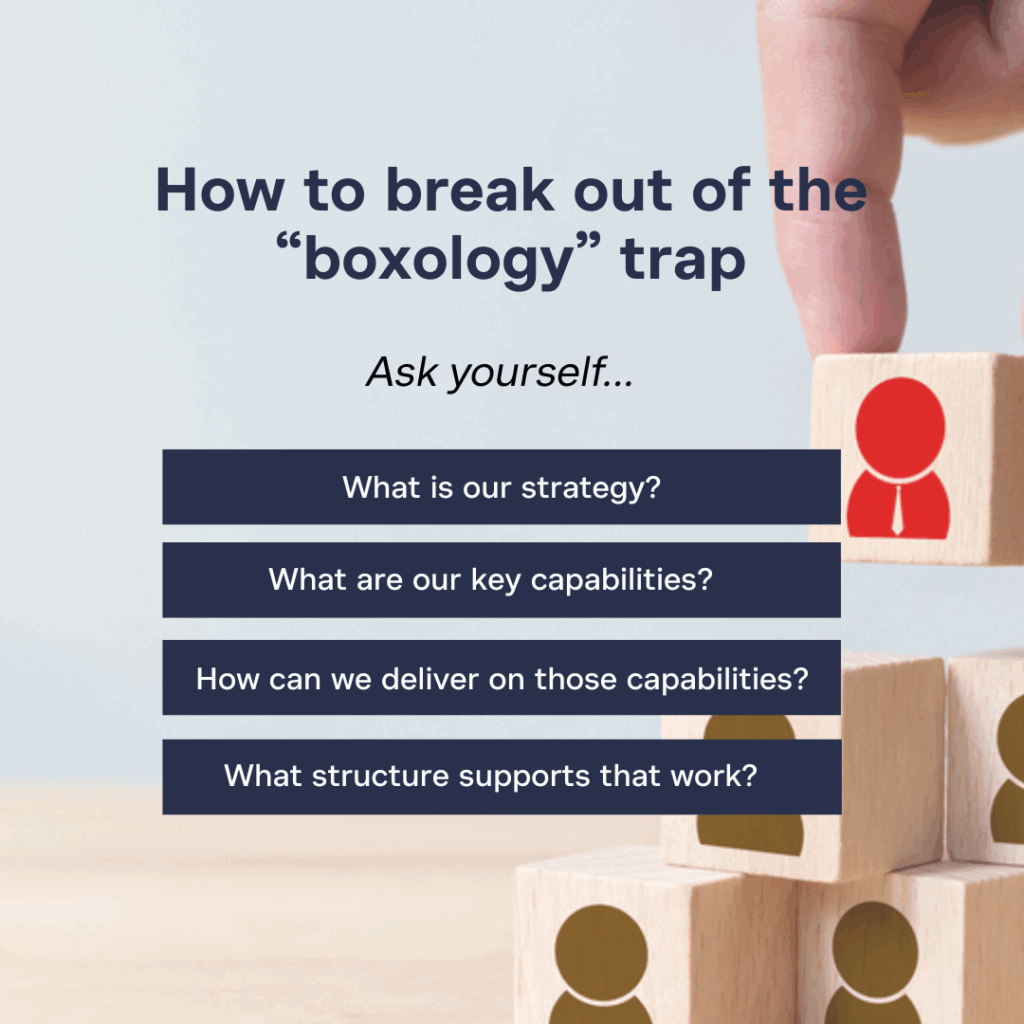In today’s rapidly shifting business environment, it’s easy to believe that the secret to agility is reorganizing your structure. But too often, organizations fall into a pattern of restructuring by default, not by design. The result? Constant organizational churn, unclear roles, lost productivity and frustrated employees. At AlignOrg Solutions, we call this overreliance on org charts “boxology.”
The Boxology Trap
“Boxology” is the tendency to treat structure as the primary lever for solving business challenges. It’s a term coined in Mastering the Cube to describe the obsession with who reports to whom—often at the expense of more critical elements such as strategy, capabilities and work processes.
We often encounter executives who think, “If we just make structure changes, our problems will be solved.” But shifting boxes without addressing the real root causes leads to confusion and short-lived solutions. In fact, when companies make changes to structure without aligning the rest of the organization, performance often degrades.
The Real Sequence for Change
At AlignOrg, we advocate a disciplined approach that begins with clarity of strategy and capabilities. Only after answering the questions, “What are we trying to achieve?” and “What capabilities will differentiate us?” should we determine how work gets done. Then, we can decide how to structure the organization to support it.
We encourage leaders to resolve organizational challenges in this sequence:
- Strategy & Capabilities
Outline strategic goals and the capabilities that must be prioritized to deliver them.
- Work
Identify the value-creating activities that support those capabilities along with all the important necessary work.
- Structure & Roles
Define a structure that enables that work to be done efficiently and consistently.
When this order is reversed—starting with structure—companies may temporarily feel like they’re solving problems. In reality, they often end up perpetuating misalignment and confusion.
And here’s the overlooked truth:
1. Every structure—no matter how well-designed—comes with trade-offs.
Silos, handoffs, complexity and decision bottlenecks are often by-products of the very structure enabling your strategic advantages. The key is to proactively build the bridges (such as coordination mechanisms and integration points) that solve for those downsides.
2. Structure is just one part of the system.
True alignment comes from designing the systems around the structure. This means that decision rights, metrics, talent, incentives, culture and ways of working are all intentionally shaped to support the strategy.
The Cost of Constant Reorgs
Frequent structure changes come at a cost:
- Disrupted decision-making: New reporting lines often require new governance, slowing down momentum.
- Employee disengagement: Repeated reorganizations send the message that leadership lacks clarity.
- Diluted focus: Leaders spend more time navigating structure than executing strategy.
- Change fatigue: Teams become skeptical or resistant to the next “transformation.”
Without alignment to a clear strategy, even well-intentioned reorganizations become cycles of inefficiency.
How to Break the Cycle
If your organization has become addicted to constant structure changes, it’s time to shift the conversation. Instead of asking, “What should the org chart look like?” ask:
- What is our strategy?
- What are the few key capabilities that will set us apart?
- What work must be done to deliver on those capabilities?
- What structure best supports that work—without overcomplicating or duplicating it?
By addressing these questions in order, you align your operating model and reduce the need for reactive restructuring. You’ll also strengthen your organization’s ability to execute strategy with focus and discipline.






